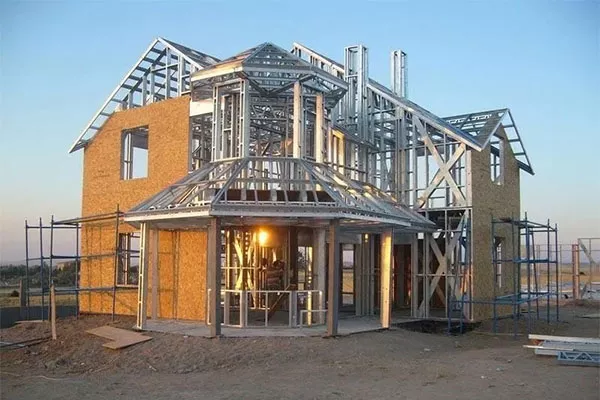The Difference Between Prefabricated Buildings and Pre-Engineered Buildings: Understanding Their Applications

The construction industry has witnessed a paradigm shift with innovative building techniques, including Prefabricated Buildings (Prefab) and Pre-Engineered Buildings (PEB). While both methods emphasize efficiency, cost-effectiveness, and modern construction techniques, they differ significantly in their processes, design flexibility, and applications. Let’s explore these differences and their unique applications in detail
What is a Prefabricated Building?
Prefabricated buildings are structures assembled from components manufactured off-site in a factory-controlled environment. These components, which may include walls, roofs, and floors, are transported to the site and assembled like pieces of a puzzle. Prefab construction focuses on speed, precision, and reducing on-site labor.
Key Features of Prefabricated Buildings:
- Factory Manufacturing: Components are produced under strict quality control in factories.
- Quick Assembly: On-site work is minimal, saving time and labor.
- Versatility: Prefabs are used for modular homes, offices, temporary structures, and even luxury villas.
- Sustainability: Reduced material waste and energy efficiency make it eco-friendly.
What is a Pre-Engineered Building?
Pre-Engineered Buildings are custom-designed steel structures fabricated in a factory and then assembled on-site. Unlike prefab buildings, PEBs are specifically engineered for industrial, commercial, and large-scale applications. They involve designing and engineering each component to meet specific project requirements before fabrication.
Key Features of Pre-Engineered Buildings:
- Tailored Design: Structures are engineered based on load-bearing, environmental, and architectural needs.
- Steel Dominance: PEBs typically use steel frames, ensuring durability and strength.
- Scalability: Ideal for large spans like warehouses, factories, and showrooms.
- Cost Efficiency: Optimized design reduces material wastage and construction costs.
Differences Between Prefabricated and Pre-Engineered Buildings
| Aspect | Prefabricated Buildings | Pre-Engineered Buildings |
|---|---|---|
| Material Used | Concrete, steel, or composite materials | Predominantly steel |
| Design Flexibility | Standardized designs with some customization | Fully customizable as per project needs |
| Construction Time | Faster due to pre-made components | Faster for large-scale projects compared to conventional methods |
| Applications | Homes, offices, schools, resorts, and kiosks | Factories, warehouses, showrooms, and airports |
| Cost | Generally cost-effective for small to medium-sized structures | Cost-effective for large-scale projects |
Applications of Prefabricated Buildings
- Residential: Prefab homes, apartments, and cottages offer affordability and sustainability.
- Tourism: Modular prefab units are ideal for eco-resorts and holiday homes.
- Commercial: Portable offices, retail outlets, and school classrooms benefit from fast installation.
- Healthcare: Emergency clinics and mobile healthcare units utilize prefab solutions.
Applications of Pre-Engineered Buildings
- Industrial: Warehouses, manufacturing plants, and cold storage units.
- Commercial: Shopping malls, office spaces, and sports arenas.
- Infrastructure: Airports, railway stations, and parking lots.
- Agricultural: Storage units for grains, fertilizers, and livestock shelters.
